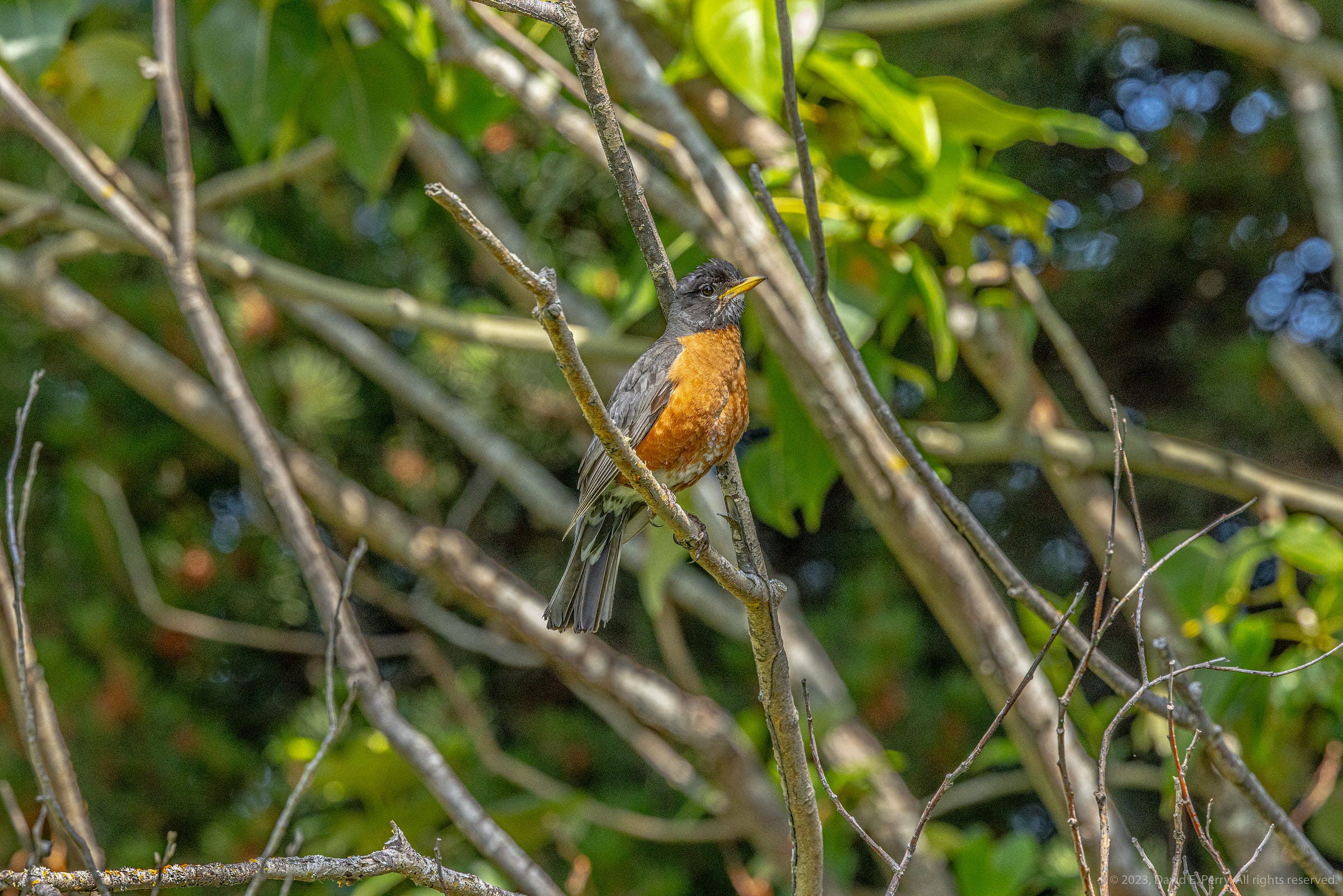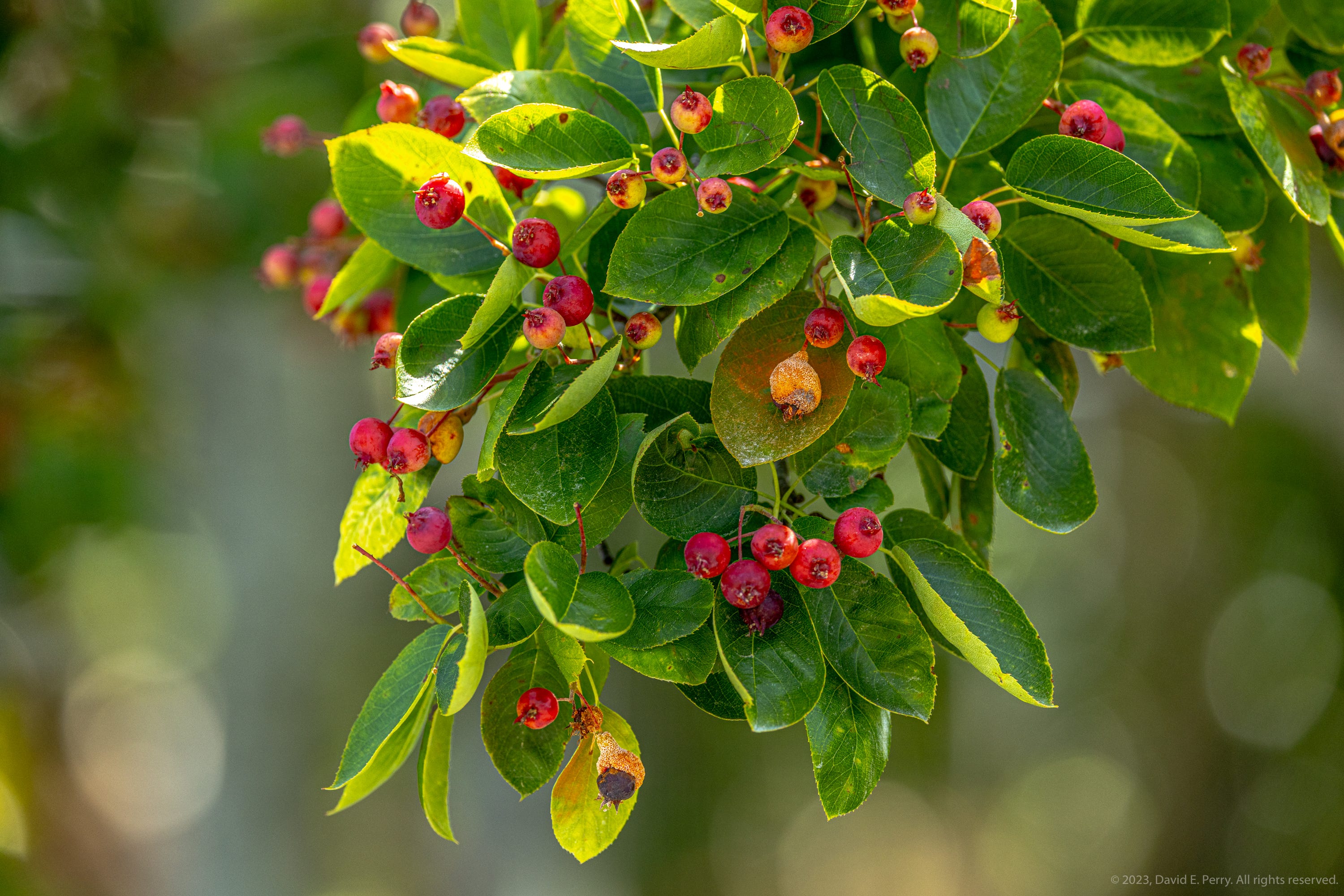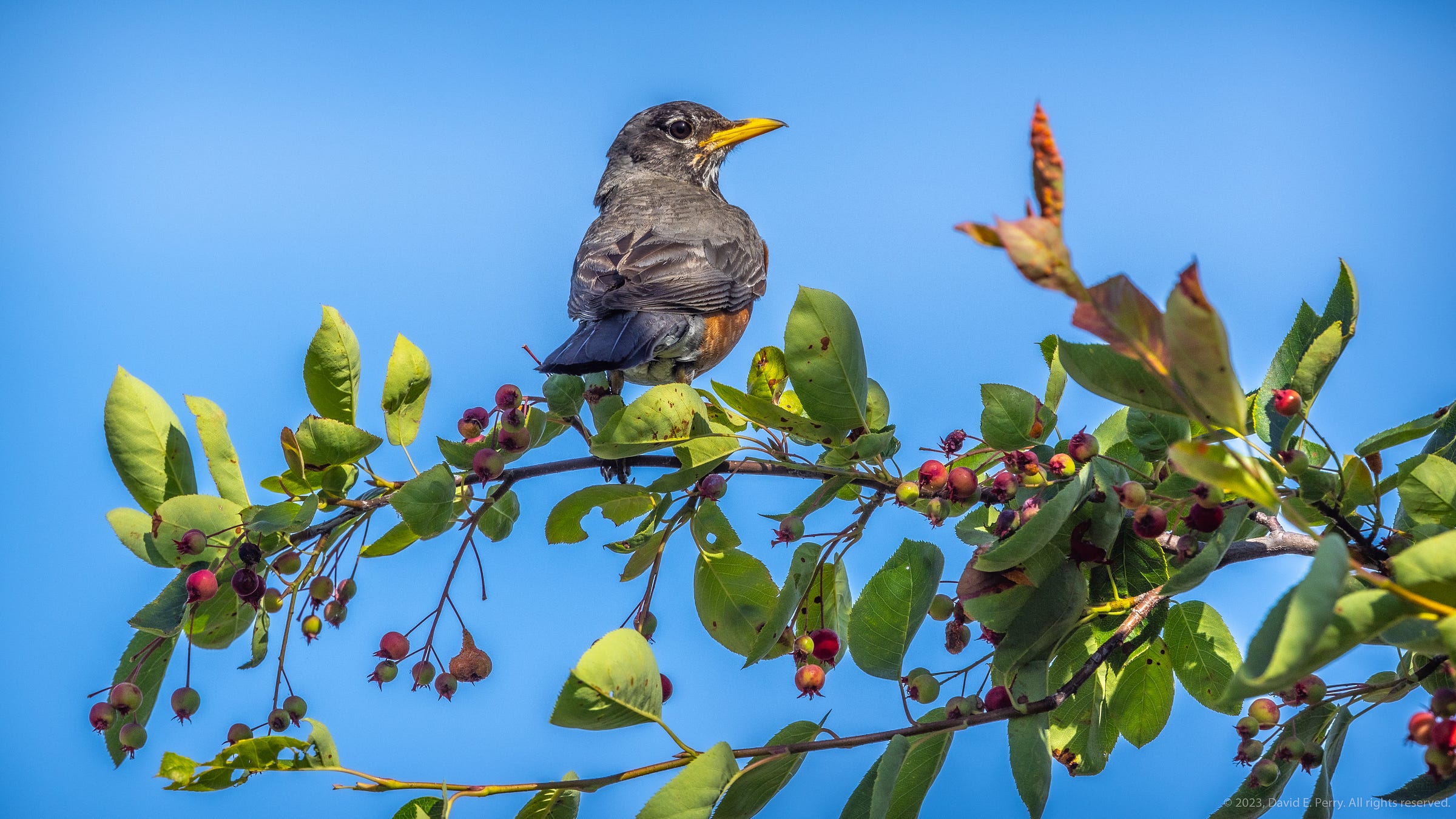Serviceberry, Shadblow, Saskatoon
Robins, towhees, white-crowned and song sparrows, starlings and crows; all have been gorging on Amelanchier fruits since they began turning red a few weeks ago.
Slightly larger than a blueberry, a ripe Saskatoon, aka, Juneberry, Serviceberry, Shadberry tastes like some wonderfully imagined combination of a strawberry and a blueberry. These treasured treats grow generously upon the tall, woody shrublike trees known and loved, though haltingly pronounced as Amelanchier arborea. ( am-ə-lan-sheer),
While the red fruits (as pictured), are certainly edible they are not yet fully ripe at this stage. And considering the stir they create within a broad swath of the local bird community this slightly jealous observer doubts that few, if any will ever have the opportunity to ripen to that coveted, sweet, deep, purple blue stage. (It’s really not about you, Dave.)
From a purely taste-based point of view I probably wouldn’t choose a bowl of Saskatoons over raspberries, or blueberries. Or strawberries for that matter, or certainly huckleberries. But they are quite delicious and I can certainly see why they are beloved, both as backroad fruit stands and jars of summer jam. Add to those tasty gifts their additional boons as beautiful, early blooming landscape plants, windbreaks, shade hedges and songbird magnets, and you’ve got more than enough reasons to smile whenever you see a Serviceberry tree.

The red berrries, though not completely ripe taste pretty good, even at this stage. As you can see, a small percentage of the fruits on this tree were infected with some sort of rust or fungal blight in their early development stages. The birds seem to avoid those. Probably wise for human foragers to do the same.
Standing Sentry: at any given time over the past two weeks there have been between three and a dozen robins at a time working the trees, plus, sometimes a handful of starlings, a Steller’s Jay or two, Northern Flickers, crows, perhaps a few Spotted Towhees and working the ground beneath, a few song sparrows and white-crowned sparrows.
If you love the idea of sitting in one place and watching several different kinds of songbirds, you could do far worse than finding a bench near a Serviceberry tree in late June, early July and just watching the parade of wings.
Above: same Serviceberry trees as the ones, pictured with berries, but back in mid-April when they were in full bloom, aka, the ’Shad blow’ stage. According to Ellen Zachos at The Backyard Forager, “It’s called Shadblow because its flowers tell you when the shad are running and at their most delicious. Blow is derived from the Old English word meaning to bloom.”
Even ground feeders like song sparrows find Saskatoons worthy of their attention and efforts. They seem to concentrate on those that fall to the ground when a couple of robins tussle for feeding turf in the branches overhead, or graze a fruit-laden branch with a flapping wing when coming in for a tight-space landing.
Coming next: Berry Pious, more observations on berry season, and berry awareness. Give me a few days.









I learned so much---about both bird and berry! This was a great read. Now I'm imagining serviceberry plantings all over the place here! (and tasting a ripe berry is now on my bucket list)
Wow, I’d never heard of or seen a Serviceberry tree before - stunning!
We have a raspberry bush that has been plentiful this year. We are, however, sharing its fruits with a very, very bold male Blackbird. Many times we’ve headed into the garden to collect a punnet, only to be met by the confrontational glare of our winged co-inhabitant, so we return empty handed. We’ve probably been identified as pushovers…